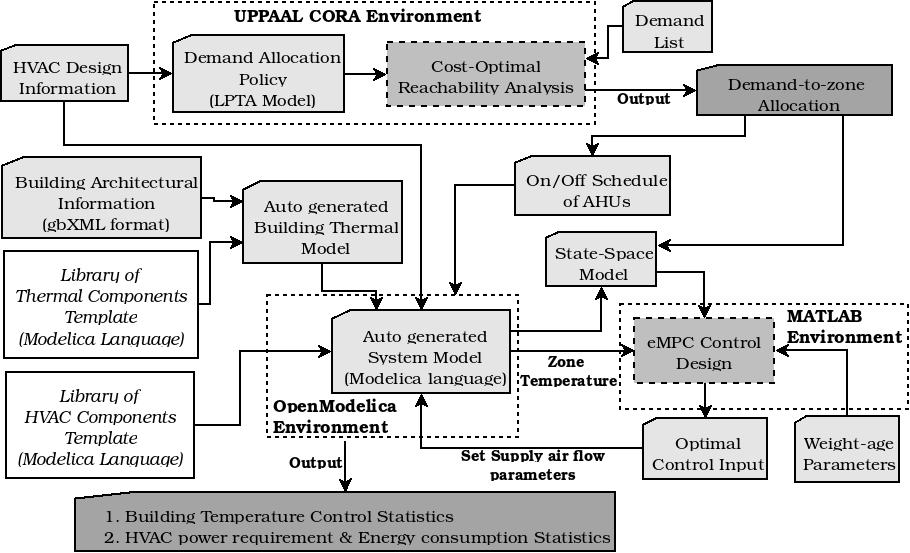
CAD support for Building HVAC Automation
An automated building thermal model generator and HVAC control performance simulation tool
 |
An automated building thermal model generator and HVAC control performance simulation tool |
|||||
The efficiency of HVAC control design depends on the accuracy of the building thermal model. However, the accuracy of such model depends on the detailed architectural knowledge of the building. Given the current landscape of available building performance simulation tools and technologies, there is possibly a lack of integration between building specification tools and building energy consumption analysis tools. In order to minimize the difference between the estimated thermal energy consumption of buildings and real-time measurements of the same, the thermal models used in building energy simulators need to be faithful representations of real building structures. Moreover, creating a building description is non-trivial for a system level co-design and simulation expert, potentially an HVAC designer working for a building operator.
In order to address this issue, we provide an automated building thermal model generator interface as part of our tool framework which can take building descriptions, as input, in gbXML which is an industry standard format used by popular building design tools to store designs created by building architects. In that way, our framework can interface with popular building design and modeling tools, generate detailed thermal models from gbXML data and make them available for demand allocation aware HVAC control design. In prior works in the domain of energy efficient building HVAC simulation, the idea of co-designing the 1. building resource allocation and 2. HVAC control algorithm is not explored as part of a unified CAD flow. This is exactly where the present work assumes significance.
|
The different components that execute sequentially inside the tool are elucidated below.
|
 |